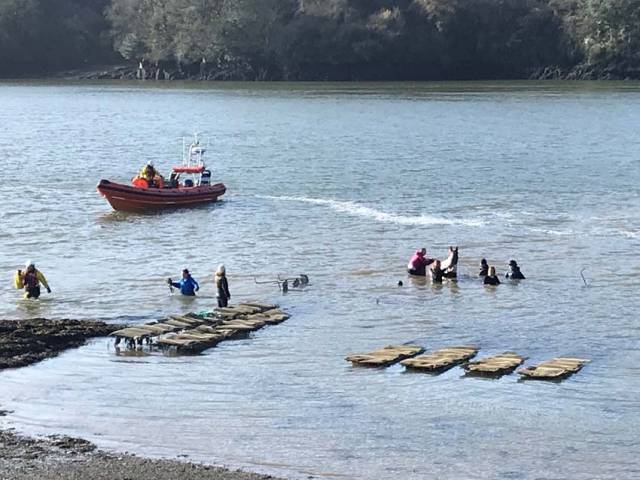#Lifeboats - It was a different kind of ‘surf and turf’ when three teenagers and a horse were rescued in two separate callouts by Kinsale's RNLI volunteers yesterday (Sunday 17 February).
Late in the afternoon the lifeboat launched following reports that a swimmer had sustained a knee injury after entering the water near cliffs off Sancycove Island, a popular site with open-water swimmers.
When the lifeboat arrived on the scene, the crew lifted the casualty and two other swimmers into the lifeboat where they were assessed.
They were brought back to the station where a further medical assessment was conducted by trained RNLI personnel and nurse Emer Scannell, who was at the station visiting a crew member.
The casualty was later taken by ambulance to hospital.
Earlier in the day, the Kinsale lifeboat crew races to the rescue of a horse named Paddy that got into difficulties in the Bandon River.
The horse’s hoof was trapped in the framework of an oyster bed, requiring a member of the volunteer crew to dive under the water and release the panicked animal.
After several attempts, Paddy was safely returned to the shore, much to the relief of his owners.
Kevin Gould, lifeboat operations manager at Kinsale RNLI, said: “We urge everyone to exercise extreme caution on or near the water, particularly at this time of year.
“On days like today our RNLI training proves invaluable and we are all relieved that both call-outs ended well.
“Today’s rescues give a new meaning to the expression ‘surf and turf’.”































































